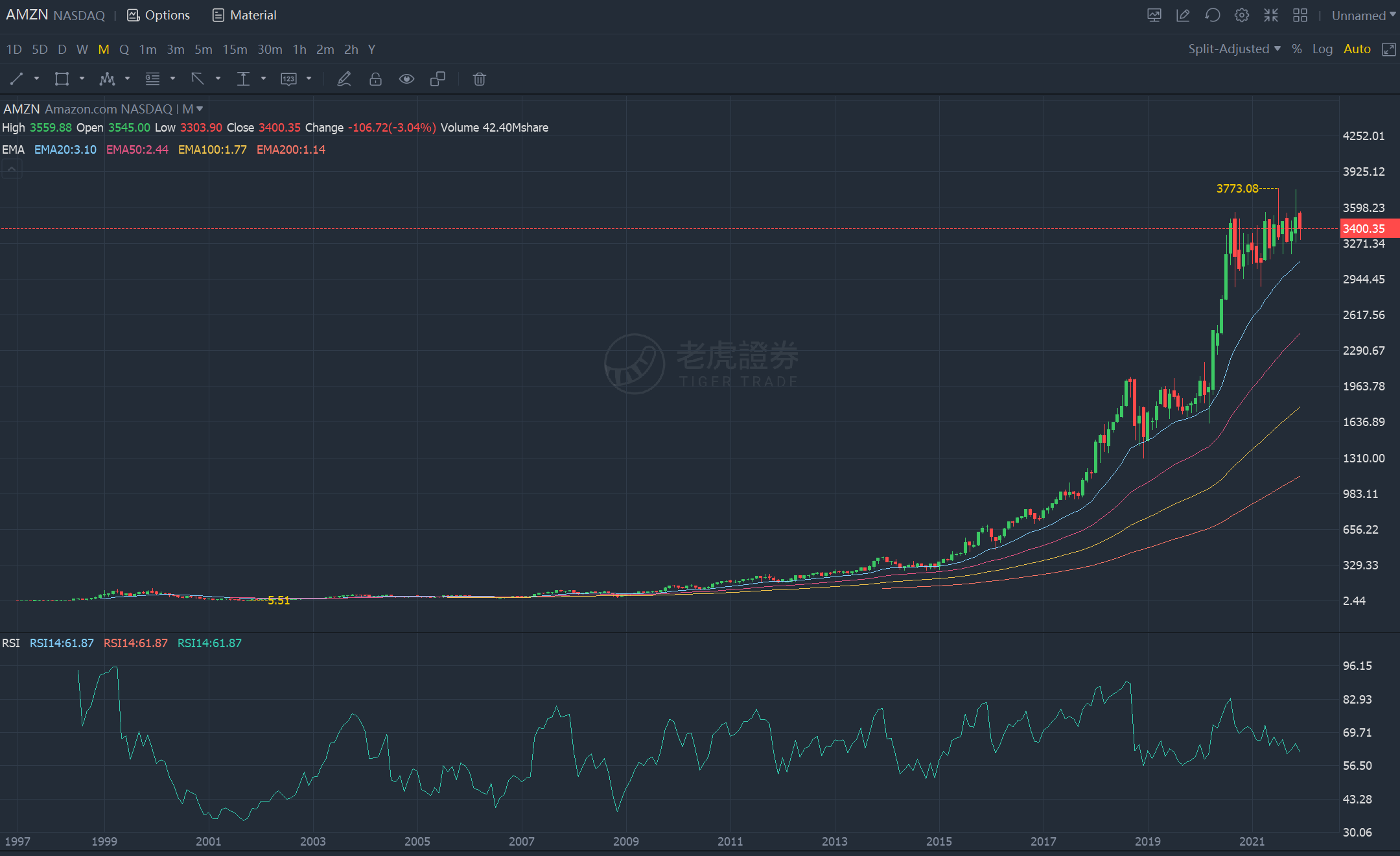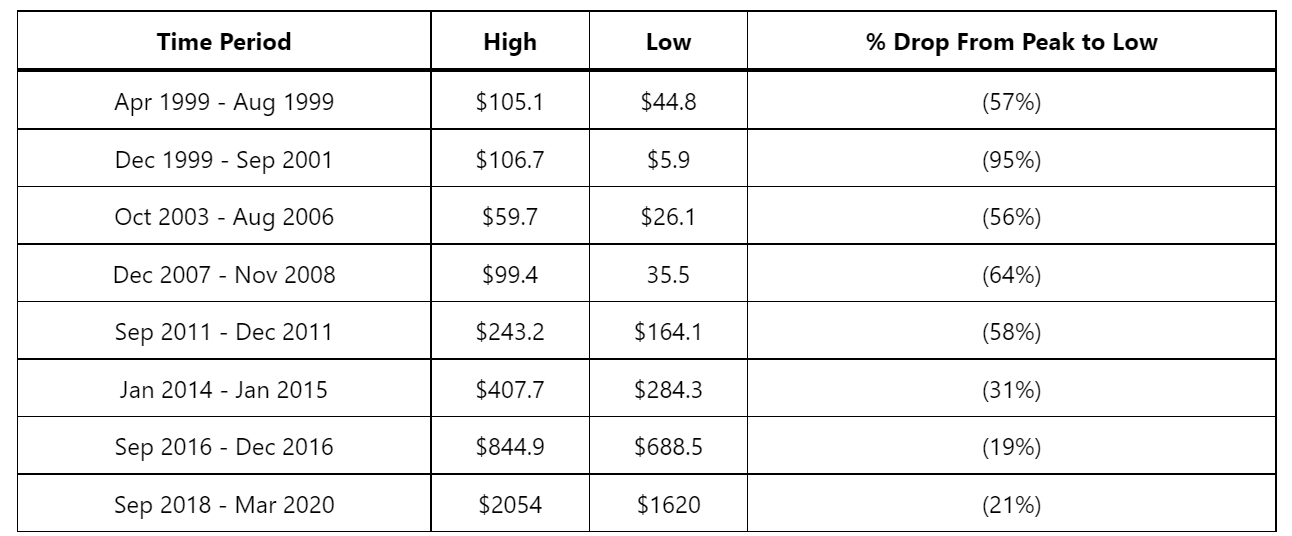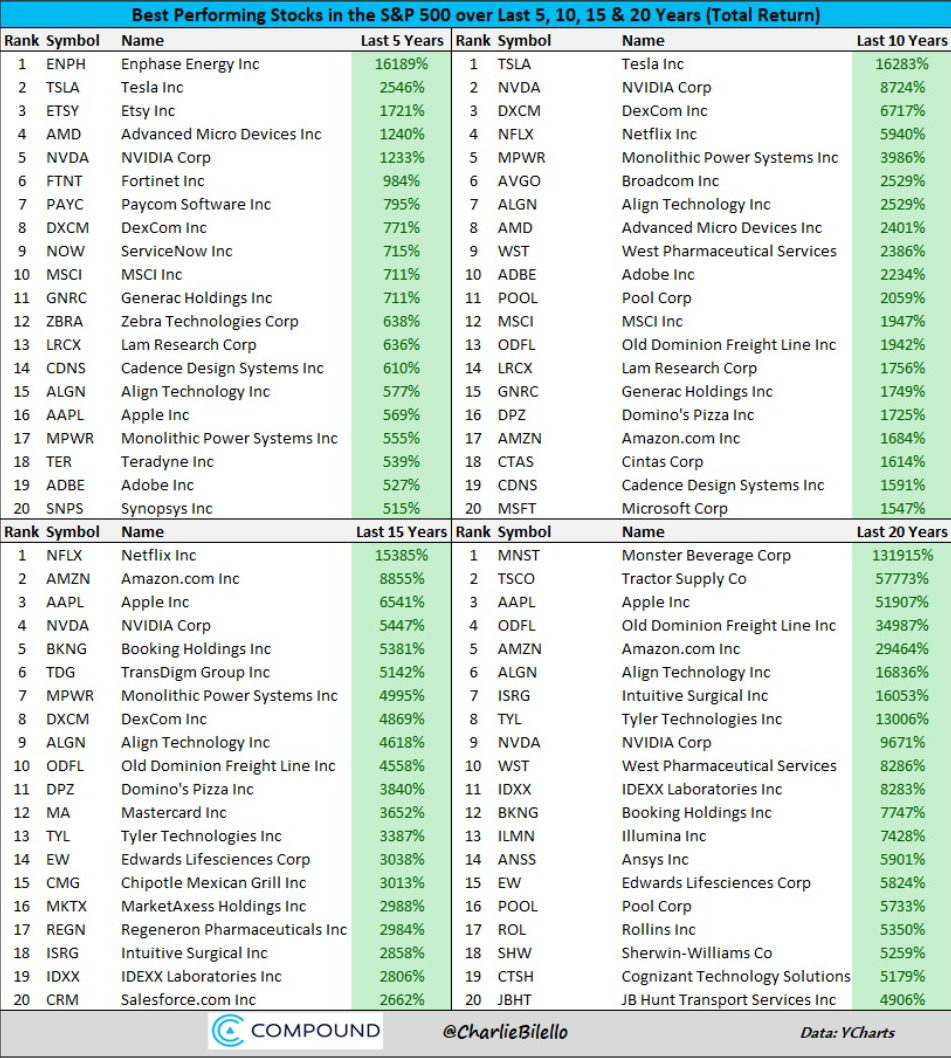The Importance of Patience & Focusing on the Business Metric
Amazon has one of the most impressive compounder chart history in many years.
After accounting for three rounds of stock splits in more than 2 decades, the stock has advanced from $1.50 back in 1997 to $3400 today in 2021. That is a whooping return of more than 200,000% return in a period of slightly more than 2 decades.
Based on the above charts, you would have thought it would be an easy ride to ride the uptrend across the full 2 decades to where you are today.
A $1,000 investment back in 1997 would have returned you about $2m today, after accounting for all the stock splits that happened along the way.
However, if you look at each milestone and the struggles it came across on each economic cycle, you would realise that it takes more than just guts and luck to ride through the entire milestones they’ve achieved altogether.
Take a proper look at the above table and ask yourself if you have the stomach to ride through all those drawdown and noises along the way.
Some of those brutal runs, especially in the earlier years were as much as 95% during the dotcom bubble, 56% drawdown during the 3 years spanning from 2003 to 2006, 64% drawdown during the Great Financial Crisis, 58% during 2011 when there were concerns regarding their e-commerce and the inception of AWS and the more recent China/US crisis and Covid-19 hit.
Dotcom Bubble which crashed Amazon’s share price by 95%:
In this article, we’ll look deeper into the sort of business unit economic metrics they were in and the conditions they were going into the dotcom bubble which crashed the share price by as much as 95%.
If you had just focused on the movement of the share price, you would have thought they were a dud company who like many others were slaughtered when the market gave them no chance.
But instead look at these metrics performance from 1999 to 2001 – a period which spanned across the dotcom bubble period.
- Sales grew 13% YoY from $2.76 billion in 2000 to $3.12 billion in 2001.
- Annual customer accounts grew from 14 million in 1999 -> 20 million in 2000 -> 25 million in 2001.
- International sales grew by 74% YoY and run-rate projection is projected to grow by high double digit over the next few years.
- Marketplace orders grew by 15% QoQ, surpassing expectations that the platform they have built worked over such a short period of time since it was introduced in late 2000.
- Customer satisfaction index grew to a score of 84 and this marks the highest score ever recorded by any service company in America.
When the stock crashed by as much as 95% during the dot com bubble even while business metrics improved, many investors were calling for Jeff’s head as price performance did not mimic what was put on the annual meeting table.
But Jeff re-emphasized once again to investors that the business metrics are improving and that investors are told to be patience to get rewarded. In fact, for a few consecutive years, the company has in every annual letter to shareholders, attached a copy of the original 1997 letter to help investors decide and look just how much the company has grown in size since a couple of years back.
In some of his letters, he has always emphasized on a few things:
- “When forced to choose between optimizing the appearance of our GAAP Earnings and maximizing the present value of the cash flows, we’ll always take the cash flows”
2. “Our obsession over customer service and experience, and commitment will continue to be a priority” In fact, rumours that in every of Amazon board and annual meeting, they have purposely left one seat empty to remind them that
- the customer is always there;
- the customer’s experience is important;
- the customer is always number one
3. ” We believe that a fundamental measure of our success will be the shareholder value we create over the long term. This value will be a direct result of our ability to extend and solidify our current market leadership position”
Conclusion:
Not all companies are going to turn out like Amazon, but for every companies that eventually do, you’d find that even the paths leading to a mega cap are not an easy ride.
Ultimately, it still boils down to the business economic moat of the company, the integrity of the management and how much value creation it can create to its users so that the company can continue to grow.
Many of the difference in views that we see in news and forums between long and shorts are likely to do with either different opinions with regards to its business fundamentals or time horizon. Shorts would view a 10% or 20% decline in a month of 6-month as a victory. Most longs who focused on the growing fundamentals of the company are likely to get rewarded by double or triple when the time is ripe, without giving much regard to shorter term volatility.
Both scenarios can happen, but only one is investing.
Disclaimer: Investing carries risk. This is not financial advice. The above content should not be regarded as an offer, recommendation, or solicitation on acquiring or disposing of any financial products, any associated discussions, comments, or posts by author or other users should not be considered as such either. It is solely for general information purpose only, which does not consider your own investment objectives, financial situations or needs. TTM assumes no responsibility or warranty for the accuracy and completeness of the information, investors should do their own research and may seek professional advice before investing.




Nice read